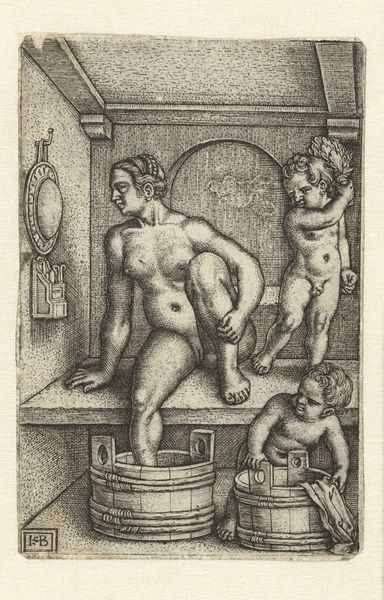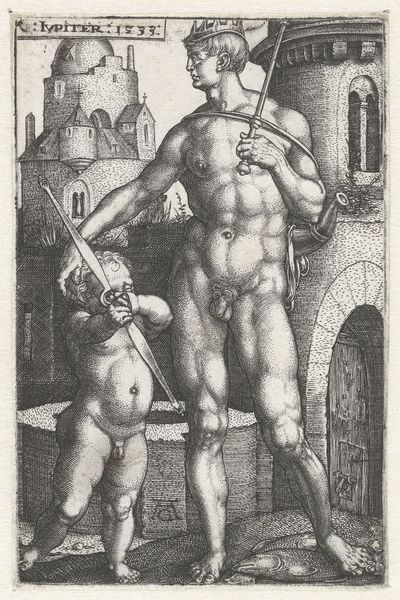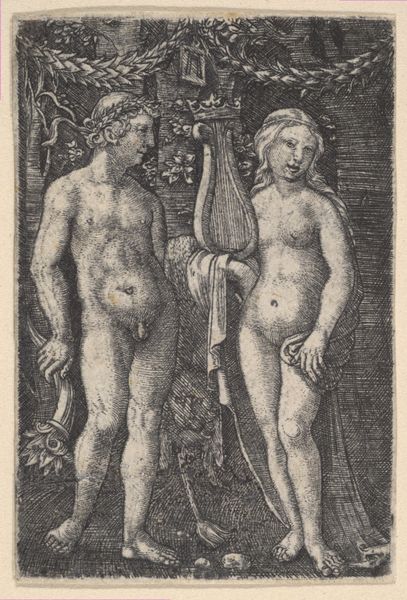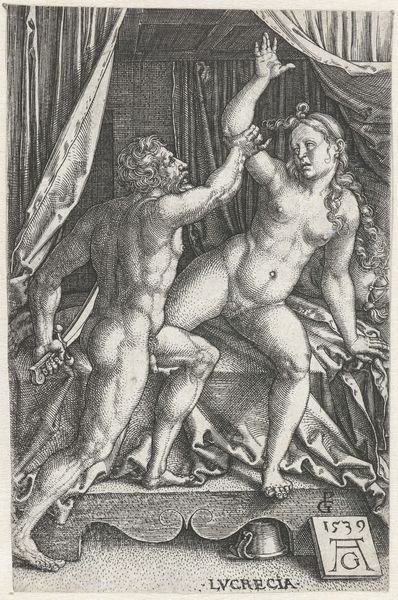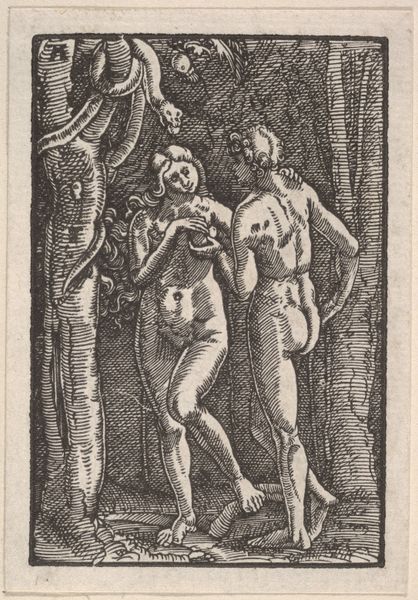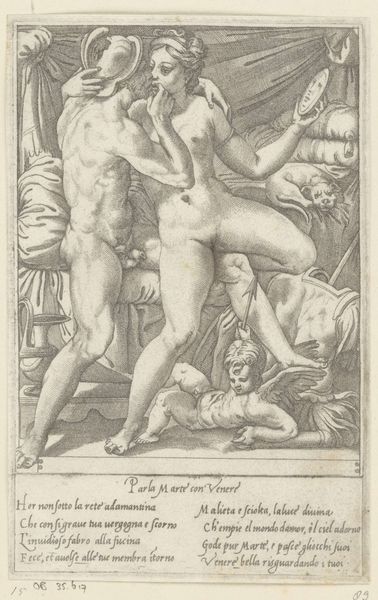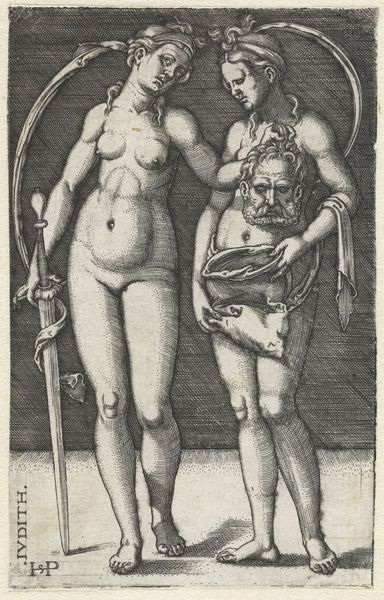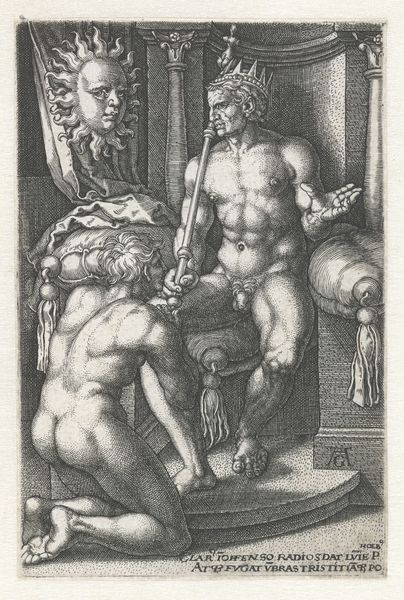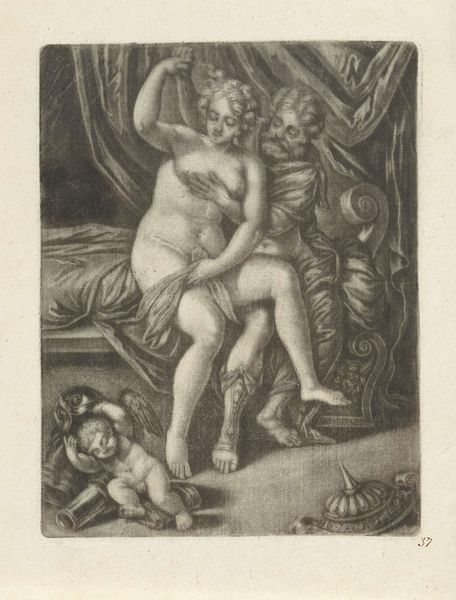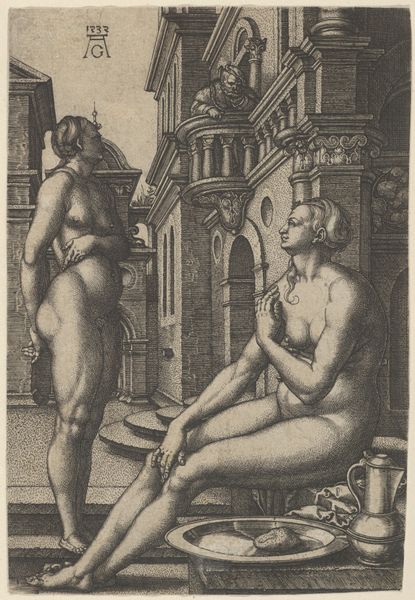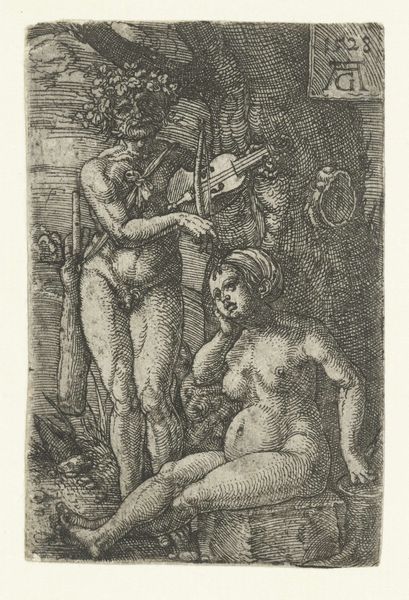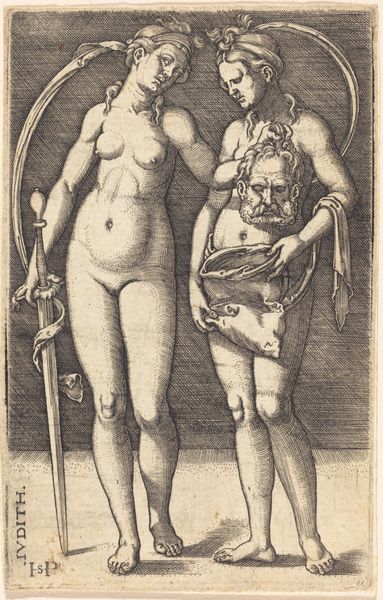
Dimensions: height 82 mm, width 56 mm
Copyright: Rijks Museum: Open Domain
Sebald Beham created this print, “Joseph and Potiphar’s Wife,” in 1544 using a technique called engraving. Engraving is an intaglio process, where the artist uses a tool called a burin to carve lines directly into a metal plate, usually copper. This painstaking work requires immense skill. The deeper the cut, the more ink it holds, and the darker the line appears in the final print. Beham masterfully uses this to create a sense of depth and drama in this small image. Look at the density of lines creating shadows, and the more delicate marks used to suggest the light catching on skin. Because the printing plate can be used multiple times, engraving was suited to mass production, and facilitated the spread of ideas. So, next time you see a print, consider the labor involved and the way this influenced the development and dissemination of imagery. By understanding this, we move beyond the simple distinction between fine art and craft, and begin to see the social and cultural context in which all artworks are created.
Comments
No comments
Be the first to comment and join the conversation on the ultimate creative platform.

